1930s Paglesham Buckland House Weekend Party (II)
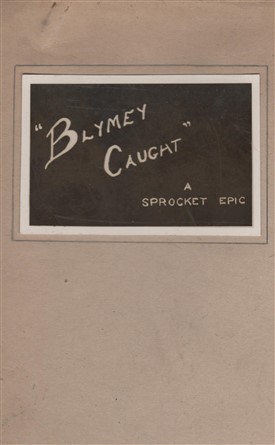
The "Blymey Caught" Script
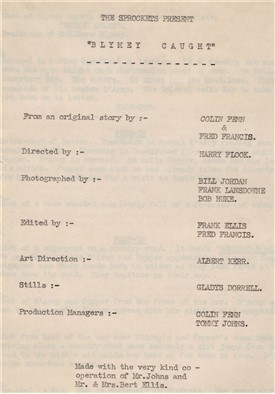
The "Blymey Caught" Sprockets Credits
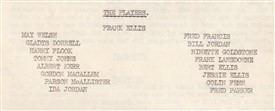
The "Sprockets" Players
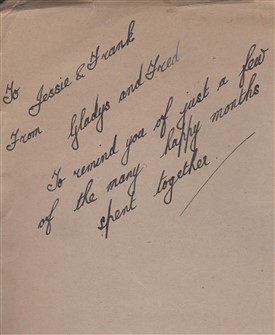
The "Blymey Caught" Script Dedication
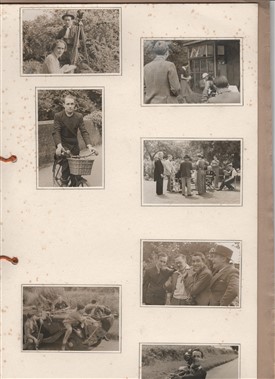
The "Sprockets" Players in action 1
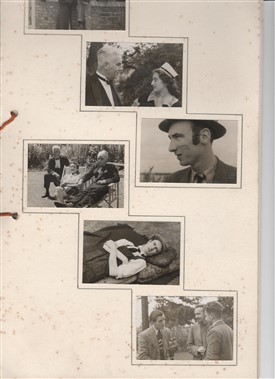
The "Sprockets" Players in action 2
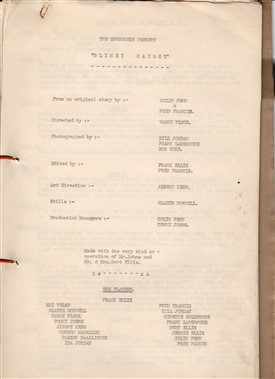
The "Blymey Caught" Cast and Crew Credits
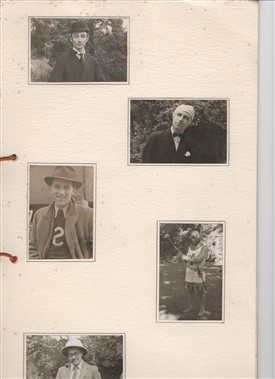
The "Sprockets" Players in action 3
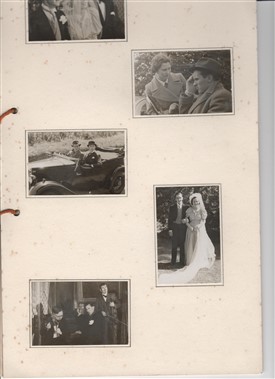
The "Sprockets" Players in action 4
How Paglesham Saved "The Elephant Man"?
Anthony Dinsmore
So how did Buckland House parties save “The Elephant Man”?
This article is a follow-up to a previous contribution of photographs taken at Buckland House in Paglesham, probably in the late 1930s. It reveals the story behind some of the weekend house-parties held at Buckland, where we can identify some of the family and guests. The text below describes also what we know of their lives after the photographs were taken, which was not long before the onset of World War 2.
So, on to the shenanigans at Buckland House, but, as all the best and worst narratives begin: "It's a long story...."
The source for the photographs is an old short-comedy film script for “Blymey Caught”, which was filmed over a weekend (or several weekends) at Buckland House by a group of enthusiasts calling themselves “The Sprockets”. It is obviously scripted, performed, filmed and viewed purely for the enjoyment of the participants themselves; not for general release. The script has been in my wife’s family possessions for years and was given to her by her great aunt, who is listed in the cast. Unfortunately, the film itself no longer exists.
The members of the Ellis family listed in "Cast & Crew" are my wife's great aunt Jessie Ellis (née Jessie Allan in Leeds in 1897), her first husband Bert and son Frank, along with Bertram and Dora Ellis, who were the occupants of Buckland House at the start of WW2.
As shown in the photos, the script’s inside cover contains a charming dedication. It begins “To Jessie and Frank from Gladys and Fred”. We can assume that “Frank” is Jessie’s son who worked with “Fred” and “Gladys (Dorrell)”.
They were all involved in the stage, music and film industries. Jessie, as "Jessie Allan" had a fascinating – if somewhat scandalous - career as a singer in Music Hall and Musical Theatre. It began with her absconding as a teenager to join a travelling musical theatre troupe managed by the father of her born-out-of-wedlock child, her eventual first husband, Herbert "Bert" Ellis (business name "Frank Rubens"). He was an ex-bankrupt, divorced music-hall manager; most notoriously producing salacious "French" stage shows at the Islington Empire. He was also an all-round impresario, agent, producer, song-writer and a "professionals manager" for major publishers and performers, representing the big names of his day (stars like Tommy Handley, Arthur Askey, Jack Warner... ).
Jessie Allan and Bert Ellis were married in London in 1924, the marriage certificate naming Bertram and Dora Ellis, who lived at Buckland House, as witnesses.
In 1939, Bert enlisted, signing up for ENSA, but died following a German bombing raid on Ipswich, where he was organising concert parties to entertain the troops.
Their son Frank Ellis started work on leaving school at fifteen, as a "clapper-boy" and camera operator at British & Dominions Studios, later becoming a camera-man for some famous British Film and TV productions in the 50's and 60's (like the film-epic Moby Dick and the TV series The Saint).
Of the other camera-operators named on the “Blymey Caught” cast-and-crew list, Bob Huke and Bill Jordan both had careers in cinema and television. Bob Huke worked on the films Under Milk Wood and Conduct Unbecoming as well as the TV series Porridge. Bill Jordan became a renowned war cameraman, shooting the famous film of the first artillery salvos being fired at the battle of El Alamein, putting himself in unbelievable danger on the front line to get the footage he wanted, and only surviving the war by an enormous stroke of luck when a German grenade thrown at the convoy in which he was travelling, landed on the bonnet of his armoured car but failed to explode.
Most interesting of all the jolly-looking enthusiasts learning the craft of film-making in Paglesham, is the young man who started work in the same London studios at the same time as great-aunt Jessie's son (Frank Ellis). This young man was Freddie Francis. However, before the weekends filming in Buckland House were taking place, Freddie Francis was a very disillusioned, even depressed, young man, seriously considering giving up his career in film because of the oppressive studio system of “quota quickie” productions. This system involved producing a film every fortnight - a process he knew was stifling any real talent that he – and others like him – were struggling to express.
We know this because almost seventy years later, this once-disillusioned young man would give a series of biographical interviews (published) in which he credited by name his former colleague Frank Ellis and his family, named "The Sprockets" group and then described the location of Buckland House without naming it. He stated quite directly that the creative artistic freedom of the cinematic weekend parties convinced him that he should continue his career and diverted him away from a hugely wrong youthful decision.
Freddie Francis became one of the most renowned, respected, original and influential British film cinematographers and directors, winning two Oscars and four BAFTAs, and stamping his individual style of camera-work on British films over many decades.
So, the influence of the Buckland House parties – preserved in the photographs - helped to save from mediocrity (or even non-existence) not only the extraordinary film The Elephant Man, but also many films and TV series where Freddy Francis was a director or cinematographer (The Innocents, Room At the Top, Dune, Glory, The Straight Story, Cape Fear, The French Lieutenant’s Woman…) and yet countless others where his "style" and influence is obvious among later generations.
One final teasing, and admittedly very speculative, “What if...?” question remains: What if great-aunt Jessie and her family and friends had not brought Freddie Francis to Paglesham and had not persuaded him to persevere with British Cinema? Would Star Wars have been the same?”
Freddie Francis was married twice: first to Gladys Dorrell (of the “Sprockets” players) in 1940; then, in 1963, to Pamela Mann, who later became script editor and casting director on the Star Wars trilogy. It does not take an enormous speculative leap to imagine that he had some, however slight influence on Star Wars, through his wife Pamela, even if he were not actively involved or credited. (After all, he worked "uncredited" on many films - The Day of the Triffids, for example.)
(If I ever find out for certain, I’ll update this article first!)